
I'm Alex Kearney, a PhD student studying Computer Science at the University of Alberta. I focus on Artificial Intelligence and Epistemology.

I'm Alex Kearney, a PhD student studying Computer Science at the University of Alberta. I focus on Artificial Intelligence and Epistemology.
Good morning, sunshine.
I recently had a chat with a couple of friends about style; it inspired me to take a project off the back-burner and turn it into code.
A couple of friends posed a question: is artistic style something that is innate, or cultivated? We spent a few hours digging into art we had created throughout adolescence and into adulthood, picking apart what remained consistent throughout. We sifted through sketchbooks thinking about what may have influenced changes.
To some degree, each of us kept track of inspiration. Katryna went as far as to keep collages and document each of them. I've always admired collages: there's something about collecting, organising, and drawing inspiration from unexpected places.
When I travel, I often take pictures of scenes I find interesting: details that catch my eye. A memorable example: to shelter from the rain in Vienna, I ducked into a chapel. The dreary light diffused through the windows to create a high-contrast baroque scene. Typically overwhelming colours and ornamentation became subdued. I collected the moment for later.
It's not just scenes that I collect. Occasionally I'll find a striking design element or detail and save it for later. A bar I was dining at during a layover in the Houston airport was tiled with mahjong pieces.

In spite of my aesthetic hoarding, I don't really have a method for collecting these images in a sensible way. They sit on my phone, my computer, and my desktop: apocalyptically poor organisation. I'm always on the hunt for inspiration, but don't have a place to enjoy the fruits of this collecting.
aether is a small flask-app with hints of javascript that take a folder on your server and transform it into an infinite scroll of images that are slowly loaded as you cruise by. In my head, these scenes and images were being collected to make some wild reference art-book collage. By making a tiled album, I'm conveying the sense of purpose that I originally intended.

You can find the code in a repo here.
These images are displayed in a haphazard way: the only unifying trait is that each represents something that I liked. In the future I hope to add a more contentful display. I'm thinking that by employing some simple computer vision, I can partition the images by theme and sort them by feel.
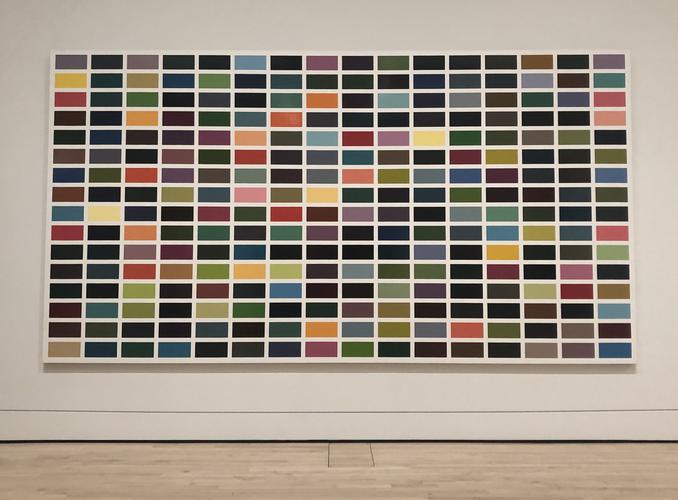
This painting isn’t just colourful: it’s an also an optical illusion. If you stare at it, it looks like there’s grey dots in the intersections.
Dylan and I rang in the new year with a project night at Kat and Rory's. Kat has an old knitting machine that we managed to get going again---a passap vario. By 2:30 in the morning, we had our first machine knit project: a cape.
It feels good to ring in the new year with a silly and achievable project. I've learned something new, I've made something small, and the year's just begun.
Dylan and I made our way up to Canmore this weekend. We stopped by the old lake I used to swim in as a kid to try some astrophotography. I captured Rundle mountain with a whisp of the milky way streaking up after a little practice.
There's still a lot to figure out, but I'm happy with my first attempt.
Recently, I was invited to give a talk at a philosophy workshop co-located with one of the conferences on interdisciplinary science in Porto. I spent close to two weeks in town. Dylan was in London for a meeting; we were lucky enough to be able to overlap our trips and take a little break in Porto for a few days.
Porto seems like a city in flux. When you talk to locals, they say it was very different five years ago. There's evidence of this in the cityscape. Wandering around parts of porto you'll find brand new developments sprouting out, giving the city a new face.
While the city seems to be growing and changing, by taking a few steps off the path---or, in some cases while staying on the path---you'll find derelict buildings. Walking to my accommodation when I arrived, I spotted a hollowed out building wedged between two still in use. Looking in the vacant windows you could see the roof had fallen in and only a few beams were left. This is the case in some of the more touristy areas as well. Next to some of the major museums, the university, or on your way to one of the port houses, you'll find buildings that are boarded, or with shattered windows.
I'm not sure what the story is there.
One of the reasons to visit Porto is to enjoy the architecture. Many of the city's historic buildings are covered in beautiful tiles. The facades and interiors of public spaces---including churches and train-stations and the like---are covered in scenes that are painted on tiles. The waterfront buildings are vibrant and colourful. You'll find bright buildings with clotheslines air-drying laundry above wine houses with delicious tapas.
There are also many examples of Baroque churches throughout town. These are gilt to excess, putting even spanish churches to shame. I guess that's the historical bounty of pillaging Brazil on display. While impressive, these churches are overwhelming: one was enough for me.
Interestingly, the cathedral is less visually shocking. Situated at the top of the hill overlooking both sides of the river, it's an older, more reserved example. I visited in the hopes of escaping a torrential downpour until the weather cleared. This was an excellent opportunity. While gargoyles have kept watch over many places I've visited, this was the first time that I'd seen one performing it's less spiritual duty: siphoning water away.
While I was aware of the cathedral before making my impromptu visit, I didn't know that one of its towers was open to the public. Clerigos Tower is most frequently suggested by travel guides, but the view from the cathedral is much more grand. Climbing up from the courtyard, you emerge to a panoramic view---possibly the highest in town.
The character of the city's architecture can be found not just in the facades of buildings, but also in the details and construction techniques. Many of the historic buildings in Porto with rich wood panelling actually have no wood at all! For instance, the walls and staircase of the famous bookstore, Livraria Lello, are made from plaster. At first glance, you wouldn't think it. Even when you're primed and looking for examples around town, it's difficult to discern the plaster imposters from the genuine lumber articles. Only when the facades are worn and chipped is it possible to be certain.
The people in Portugal are friendly and patient. They even overwhelmingly tolerated my terrible Portuguese. Some even taught me words so that I could make it through my next order at the local bakery a little more efficiently. Portuguese bakeries are as good as they are prolific. It's easy to start the day by grabbing and espresso and a tart while sitting in in a square.
Dylan and I happened to be visiting Porto during the 2019 Canadian federal election. When we sat down for dinner on the eve of the election, we found that the couple seated next to us at the bar were a couple from Calgary living in Vancouver. It's a small world.
Recently, I was invited to give a talk at a philosophy workshop co-located with one of the conferences on interdisciplinary science in Porto. I spent close to two weeks in town. While I was mostly focused on work, I did have a chance to dip out and explore the city. Here's my thoughts after walking around town. Here's a list of some of the places that stood out:
Serralves is a contemporary art museum and one of the best galleries I've ever visited. The curation is fantastic; it gives visitors enough context to understand what the artist and the gallery are trying to communicate, without hand-holding the guests. Even if you're not a fan of modern art, Serralves is worth visiting: there's something for everyone.
The gardens surrounding the gallery are lush, and marked with several installations. In the center of the gardens is a fantastic example of art deco architecture: a house with a fountain leading from a cliff up to the main house.
Centro Portugues de Fotografia isn't a place highlighted by travel guides. It's close to all the tourist hot-spots, but receives much less attention.
It's worth a visit.
The centre for photography is a free museum located in a repurposed prison dating back to 1582. They didn't change much. The inner courtyard is a small square with iron bars for windows. The entrance to many exhibits is through heavy doors and bars.
Not all of the exhibits were worth writing home about, but several were exceptional. locating the gallery in a historic jailhouse gives it quirky charm. On the whole, it's a well curated gem close to where most people will be anyways. What's to lose by stopping by?
The Waterfront in Porto is a great place to wander and explore the city. There's an abundance of colourful buildings and neat narrow streets to explore. If you're willing to step off the tourist track, good, cheap food is abundant.
There's a number of wine houses along the shore of the river: a great place to grab a drink while watching the sun set flanked by Porto's iconic bridges.
A great way to get to the waterfront is to walk behind the Center for Photography to a look-out point of the river. From there, you can take steps that carve into the side of the hill down narrow streets that are decorated with the traditional ceramic tiles found in porto and a smattering of street art.
Epoca Porto is a great place for brunch. I had indescribably great eggs on sodabread toast. What was in them? I don't know.
early is a little cafe that seems to be built into an old bank. If you look into the back room, there's an old vault door that's mirrored on the inside. Dylan and I grabbed a bunch of plates to share as nibblies. Their roast cauliflower is the best I've had.
O Calcua is a nice little place close to the centre of town. A group of us went here after the conference I attended, and it was memorably tasty---served family style.
O Comercial is a treasure hidden away in Palacio da Bolsa: a historic stock exchange in the center of town. There's only a handful of tables, so it's a quiet little getaway.
Taylor's Port is the oldest port firm, but it's not worth the trek. If you're interested in boozy drinks, chances are you're probably familiar with winery tours, or have at some point wandered through a distillery. The joy of these tours is getting to see where your favourite libations are made: getting to walk through the process.
You'd think that port--a fortified wine--would be the best of both worlds. Unfortunately, it's little more than a walking tour through one of the historic storehouses. Save yourself the time and drink port at any number of other places in town.
Livraria Lello is a breathtakingly beautiful bookstore. If you are at all interested in visiting, make sure you're one of the first 20 people through the door at the beginning of the day. At any other point in time, it is unbearably packed. It can take two or three minutes to descend the stairs as you weave through all the visitors taking selfies.
While the craftsmanship is excellent, it's near impossible to enjoy when peering through the crowds. It hardly seems safe; I can't imagine how deadly a fire would be with the way they pack tourists in.
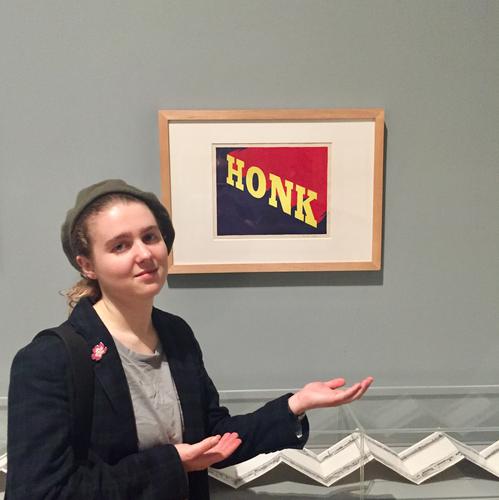
Press Y to
It's been 10 years since I've been to the Tate. The last time I visited was the beginning of a trip through London and Paris to visit the major galleries.
I remember seeing the turbine room when How It Is was on display: a massive empty container that swallowed the light up as you walked inside.
My first visit to the Tate was also my first introduction to modern art. Now I'm visiting on a stop-over.
Here are the four exhibitions that struck me most:
A retrospective of Panayiotis Vassilakis' work. Many of Takis' pieces made tangible the invisible electromagnetic forces around us. Impossibly large pieces---likely made of lighter materials---brought from their resting position to hover next to a large magnet.
In the exhibition they also had a number of Takis' notebooks, where he had engineering drawings and plans for sculptures. Curator notes had quotes where Takis discussed the interdisciplinary nature of Art and it's relation to engineering and sciences. You can feel that sentiment in his work. Early pieces used aeronautical instruments salvaged from WWII aircraft, taking functional technical gauges and repurposing them for sculpture. Some of his later pieces were simple enough to be made commercially available.
Ed Ruscha is an artist that started their in design. Many of their pieces are serious, visually appealing paintings, with weird mish-mashes of slogans typeset on top: bliss bucket.
Turning around the corner to enter the main exhibit, I was caught by a beautiful Rocky Mountain sunset with exaggerated blues and deep contrasting colours interrupted by typesetting over top: PAY NOTHING UNTIL APRIL. Every time Dylan and I re-entered the main room from one of the peripheral displays, I had to laugh.
One of the quieter exhibitions was Naoya Hatakeyama's cityscape photos of Japan. Naoya layers paper prints and transparencies over a lightbox. The resulting photos are scaled-down intimate photos of urban environments that seem to twinkle.
Dylan recently watched a documentary on Olafur Eliasson's work, and was taken with the mono-frequency light installations he did. While we were on our way to the Tate's rooftop lookout, we decided to take the elevators: a largely unused space. Once the elevator doors closed, and the outside light was shut out, the colour was sapped from the room by the yellow mono-frequency light. The elevators---a space you only use to get from one place to the other---was turned into an installation.
Serendipity.
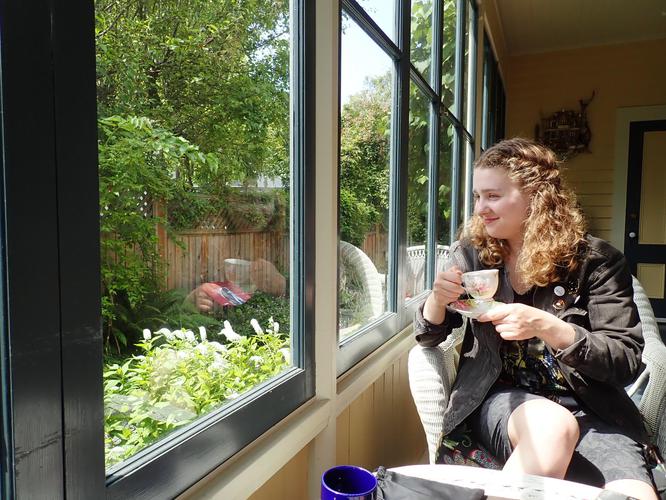
It's always interesting to see the origins of an artist you admire. Dylan and I meandered up to beacon hill to see Emily Carr house---the house Emily Carr and her sisters grew up in.
The museum was uniquely curated: sparse on details, but scattered with quotes that captured the family's experiences. It's fitting for a modernist.
The Carr's house was a large victorian home close to the sea-side, butting up against Beacon Hill Park. Many of the quoted passages throughout the home captured the. It's easy to see where Emily Carr's interest in capturing landscapes came from.
One of the most exciting aspects of the home isn't restoration-related. During the winter months, when the home is closed off to the public, Emily Carr house is hoping, to have a artist residency. I'm excited to see what comes of that.
Today Matt and I went to the Ghibli museum. I opted to wake up and head over a bit ealier to take in Tokyo craft week. I made my way over and found a small cafe that specialized in roasting and pour-overs. Swing jazz in the background. The man was friendly and greeted community members walking by, starting their day. He ground coffee for both of us, letting me smell the aroma of each to learn a bit more. I sat and enjoyed my cup, charting my path for the day.
I ambled down a street lined with artesans. I found a yarn store that would wind balls for you based on the yardage you need. I bought a fuzzy frog coin-pouch. The whole street felt like sidney outside of victoria. It had the same pace of people strolling up and down the street starting their day. I followed along.
There was really only one particular place I wanted to visit, and it was shut. I moseyed up and down the street to make sure that I was in the right place. Just as I was about to leave and head to the museum, a trendy-looking woman came barreling down the street to open up the shop. We chatted about about ceramics, and I picked up a chawan in natural colours with green glass pooled at the bottom.
I had to book it over to the museum to make it in time for our slot. Angling for a snack, I made my way into a tea shop that specialized in darjeeling. I was welcomed in by the woman running the shop. By the time I figured out they had no snacks it was too late: I felt like I could walk away from the woman running the store after she was so welcoming. I left with a great cup of tea and huffed it across one of the most beautiful parks I've seen, but regrettably didn't get to enjoy.
I could see why they chose to have the ghibli museum in such a magical, natural park.
It was fascinating how the unmistakably ghibli style was rendered into reality. The familiar shapes and details found in ordinary materials and objects. Even the plants had the look, although effortlessly. None of it felt cultivated.
I was struck by how the crowd interacted with the space. Photos were prohibited, save for a small spot on the roof-top terrace. This meant people were paying attention.
The exhibits didn't have too much content, but what was there was all informative and impactful. A series of rooms set up to look like an animation studio outlined key aspects of the process. My favourite was the story-boarding. The room was plastered with reference images from all sorts of films. I'm not sure if they were originals from film-making, but they were certainly hand-drawn. It was actually a very emotional experience. There were drawings of character studies out in the open, pinned with thumbtacks to the wall. Anyone could accidentally touch them or damage them, but they were in well cared for.
On a table were three art-books. Inside them were plastered cut-outs as a study for one of the films. Pieces of origami paper were used as borders and backgrounds. Everything from horoscopes to trains to military uniforms---all neatly placed in reference books.
The room was filled with treasures. Small sculptures, trinkets, prototypes, reference books piled into a mound. Chaotic productivity. I was inspired, although maybe my inspiration comes from a cargo-cult mentality. It looks productive.
There was a lot of care put into the details. Even the smoke-detectors had caricatures painted around them. There was a cabinet downstairs you couldn't open. Unlike the doors above it, it wouldn't budge; however, if you bent down---to the height of a child---you could lift a flap and peek inside. There was a collection of plush characters and an Oscar. It's not flaunted, but left hidden. You have to be curious to find it.
I bet there's countless treasures I missed.
Akihabara Station → Ghibli Museum
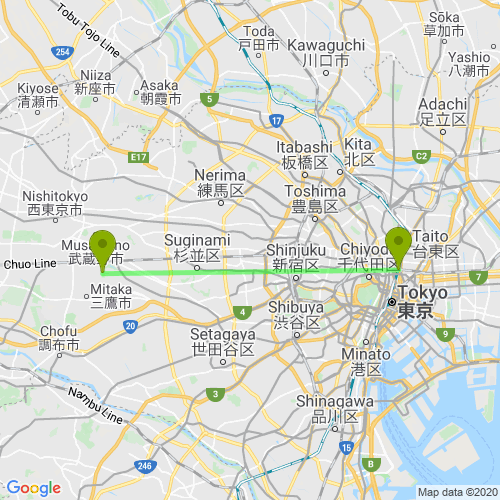
We woke up early to go to Odaiba: an artificial island filled with amusement parks and expo halls. The train to the island had a wonderful view; we dipsy doodled east, crossing a bridge over to the island. Through the dockside cranes you could catch glimpses of mount fuji: a little triangle on the horizon slightly obscured by particulate and capped with snow.
We were on the island to see the Team Epsom Digital Art Museum a concept piece that dwells on themes of nature and industry. We entered into a dark room that erupted into an open space covered in butterflies. There are no maps: there is no set path. We discovered each installation by exhaustively searching through a maze of hallways. I'm still not sure if we managed to even find all the installations.
The first room I found was my favourite: The Nest. You entered by climbing across a rope cat-walk down into a net. We were suspended in the dark above a mirrored floor, giving the impression that you're floating in an endless abyss. Lying down in the nest, you could see a mass of what looked like stars, all flickering in the void.
Once everyone was settled, a few glyphs moving and changing emerged from the darkness. Shapes and sounds whirred around, giving the feeling that you were warping through space and tine.
Getting lost in the museum was immensely satisfying. The whole labyrinth really imparted a sense of wonder. The meticulous sound-scaping and darkness of the museum created a complete, immersive experience.
What caught me the most was how they played with your perception by creating complex projections onto irregular spaces.
Each of the rooms had to be discovered. Subtle cues in the hallways alluded to the presence of another room---for instance processions of sedans of animals marching down the hall.
In the back of one of the rooms, obscured by a sheer curtain, was a tea-house. Using carefully arranged projectors, the chaisu's were decorated with blossoms that slowly blossomed in your tea as you drank it. ONce you finished, or if you disturbed the projection enough, the blossoms blew away.
It was beautiful to watch the cup with the froth---almost as interesting as watching the rest of the room discover their tea. There was a small child sat on a guardian's lap, helping herself to a bowl of matcha icecream. Although the room was dark, you could just barely catch her expression in the reflected light of a field of grass crowing around her icecream bowl.
The space was inspiring.

I often focus on the scenes in travel photography, cutting out people wherever possible; however, after binge-reviewing my old albums, I've noticed that the best photos are always ones where people are interacting with the environment--even when they're tourists!
Johannes and I had a some time before our flight left after the AAAI Fall Symposium Series to go check out some of the sights in D.C. We walked around the mall in the morning before the crowds descended and had a chance to take in the monuments with very few people around.
You often see the Vietnam War memorial in popular media, and for good reason: the Vietnam memorial is impactful.
I had never seen any depiction of the Korean War memorial: a lush statuary, rather than the typical neo-classical plaza.
The only way to experience the memorial is through a forest. To get to the inscription and the fountain you must emerge from cover into a clearing with a platoon of brass statues. The first statue seems to be waving you back.
The monument brings the environment to the statues.
There were a few wreathes laid down by the fountain, both with fresh flowers from Korean community organizations.
Watched Donnie Darko for the first time and it is fantastic and amazing
Went to the Edmonton story slam for the first time
Had espresso at transcend
Read a bunch of random epistemology and got Expressivism, pragmatism and Representationalism
Had excellent chats with visitors from DLR about robot constructivism
Prepped for my first Grace Hopper Con
Had dim sum
Managed to summarize my research proposal in one page!
Had a birthday dinner with my family at Bistro Praha
Some people asked to take a selfie with me and I am still confused by it
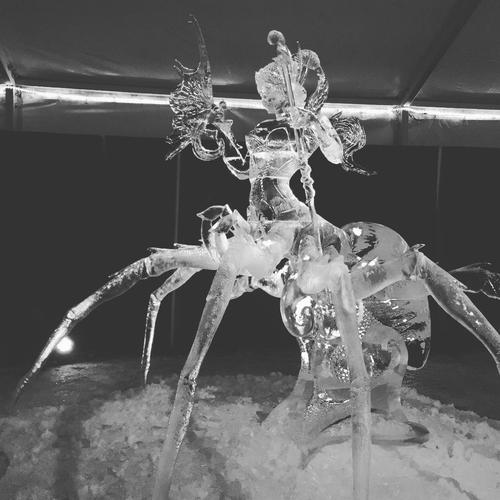
There are some crazy ice sculptures at @iceonwhyte. It’s one of three international competitive ice sculpting competitions in Canada and all of the sculptures were made in 35 hours.
The detail on some of the sculptures is incredible, and the use of transparency and opacity in the ice is really neat. • • • #art #sculpture #ice #yeg #yegwinter #winter
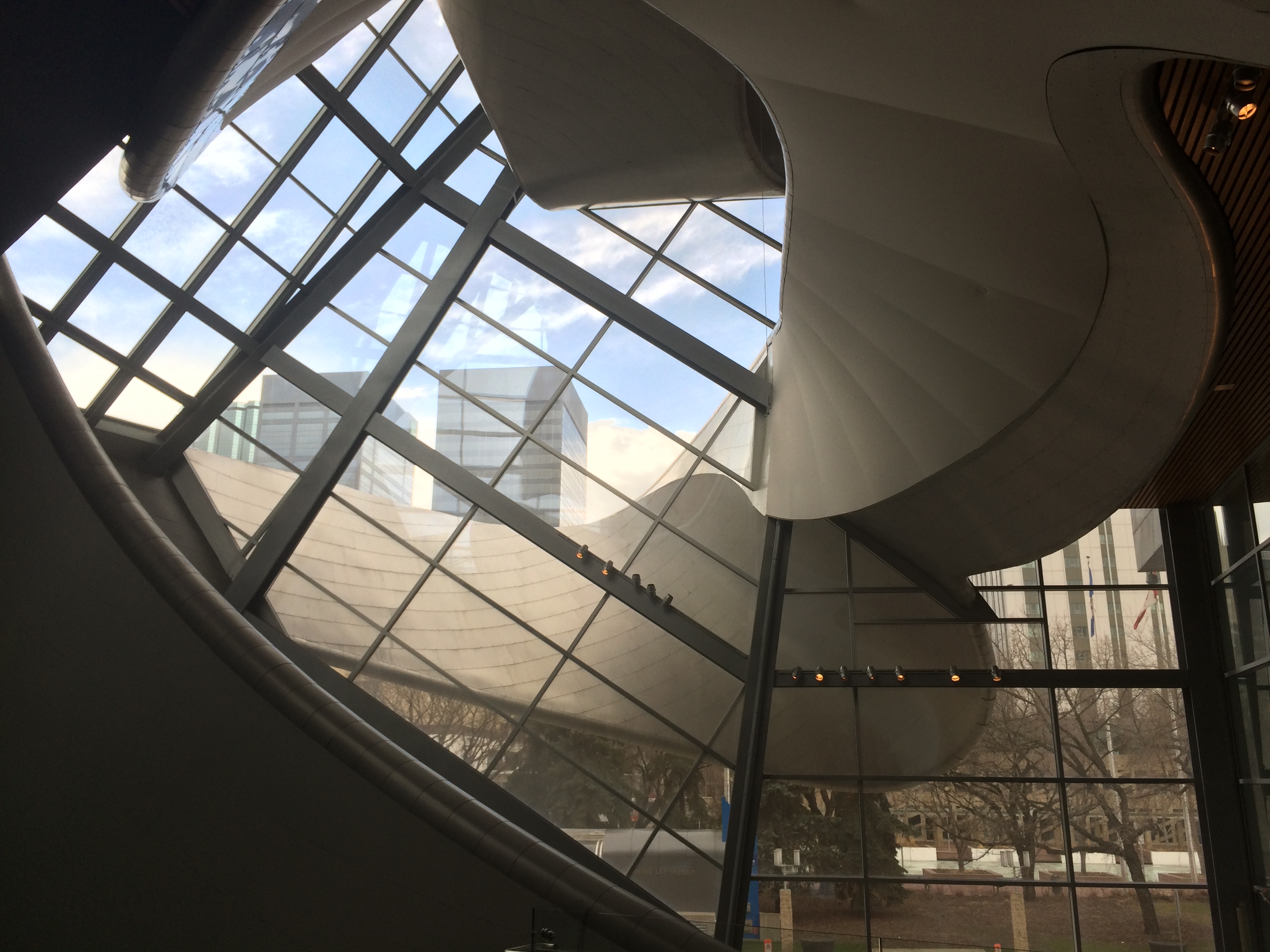
Day at the art gallery.
Design For Informatics is wrapping up. Seeing the diversity of people's presentations makes me appreciate the value of a project-based course.